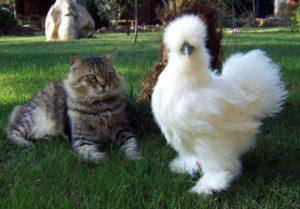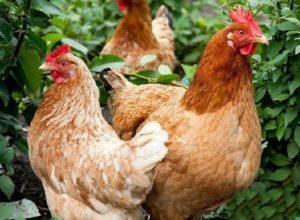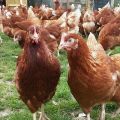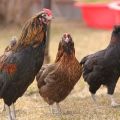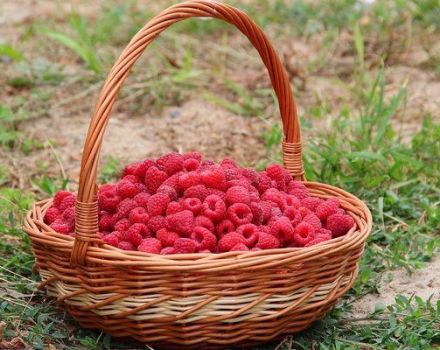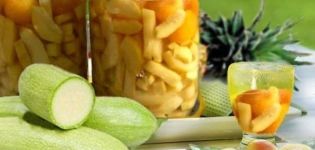Description and characteristics of the Livensky calico breed of chickens, requirements for the content
The breed of Livensky calico chickens is considered lost and is found only in private farmsteads. On an industrial scale, large poultry farms and farms do not breed this breed. At the same time, Livensky chickens have a number of positive characteristics and are distinguished by constant productivity.
Origin story
Livensky chickens were bred by folk selection. Over the course of a long crossing of different species, this breed was discovered, which rapidly spread in Russia, Belarus and European states.
In the post-war period, she was engaged in breeding the breed at poultry farms to intensify the production of meat and egg products. Then more productive breeds appeared, and the Livensky chickens faded into the background. In the early 80s, the breed remained exclusively on private farms.
Description and characteristics of the breed
The Livensky calico birds are characterized by several features. When planning the breeding and maintenance of the breed, it is recommended to read the detailed description.
Appearance
Birds are large and powerful. The weight of chickens reaches 3.5 kg, roosters - 4.5 kg. The body is oblong, horizontal. The back and chest are broad and well developed. The wings are short and close to the body. The head is small, with a poorly developed leaf ridge.
The plumage is dense, but not dense. There are many feathers, and they can acquire various colors, including golden, gray, white, black. The predominant shade is chintz, which explains the origin of the breed's name.
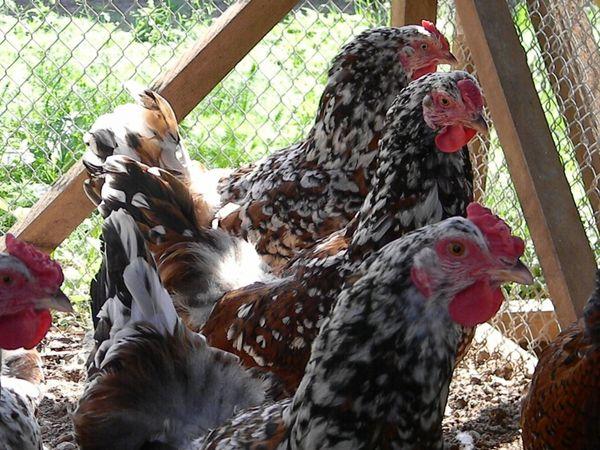
Bird productivity
Considering the productivity of the breed, you should pay attention to the egg production and the amount of meat obtained from each individual. The Livenskaya breed is valued for its high productivity in two ways.
Egg
Females begin to lay eggs at the age of 7-8 months. The average production rate is 150 large eggs. A distinctive feature is the seasonal nature of egg production. Half of the annual rate of hens is demolished in the period from the 3rd to the 5th month from the first oviposition.
The mass of one egg is 70-80 g. The amount of dense protein in eggs is much higher in comparison with other breeds. The shell has a yellowish tint, and the structure is more round than the eggs of other domestic chickens.
Meat
Chicken weight after slaughter and evisceration often reaches 3 kg, which is a beneficial indicator. The meat has high taste characteristics and delicate structure. If the diet of birds is incorrectly formulated, the meat can become tough, but the taste and juiciness will not deteriorate from this.
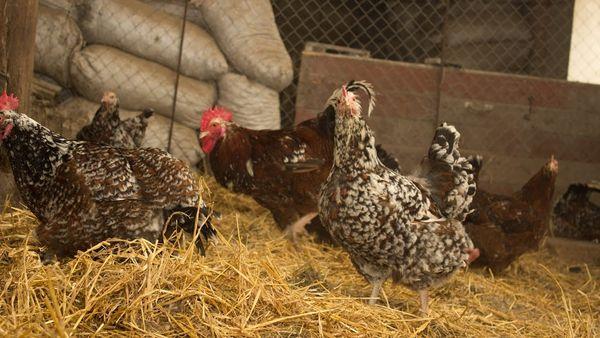
Character of chickens
Chicks are shy and restless at an early age. Adults display a restless and sometimes aggressive nature. It is often possible to observe plucking of feathers by older individuals in chicks and pecking of eggs.
Advantages and disadvantages
Varieties of Livensky chickens have a large list of positive aspects. Among the advantages are the following:
- picky about the diet;
- immunity to common diseases;
- large eggs;
- high survival rate of young animals;
- the ability to adapt to negative weather conditions, including severe frosts.
The main disadvantage is the comparative late puberty. Chicks are slower to feather, so during active development they should be in a heated room under constant supervision.
Recommendations for maintenance and care
Chickens of the Livensk breed do not have specific requirements for keeping and care. Individuals easily adapt to imperfect conditions, but maximum productivity can be achieved only when a favorable environment is created.

Arrangement of a chicken coop
Due to the large structure of chickens, it is preferable to keep them in a room with a lot of free space. It is not necessary to insulate the chicken coop for the winter, but you need to put a litter on the floor and make sure that it remains dry.
It is allowed to place chickens in a barn with cattle and build separate seats for them. Nests should be placed not too high so that heavy individuals can easily climb into them. To prevent damage to eggs, sufficient space should be provided for the number of individuals.
Place for walking
Representatives of the breed in question love to be outdoors even in winter, so it is worthwhile to build a walking yard next to the poultry house. The fence around the designated area may not be high as the chickens are unable to fly high. The advantage will be the presence of a large amount of vegetation in the courtyard, so that the individuals provide themselves with additional nutrition for green food.
Feeders and drinkers
Drinking bowls with water should be placed inside the chicken coop and constantly make sure that they are not empty. You can periodically fill the feeders with food products, taking into account the calculated rate, or always add a balanced feed as it is eaten.

Molting and pause in egg-laying
In the process of molting, chickens completely replace plumage. Feathers usually begin to fall out in early autumn, and the process takes 1-1.5 months. During this period, females do not lay eggs. Immediately after the change of plumage, egg production is restored.
Exhibition preparation
To prepare chickens for participation in the exhibition, they must not be allowed to stay in the open sun for a long time. Burnt spots and yellowing may appear in feathers. Defective chickens are not selected for exhibitions and are not used for breeding into a pure breed. Chickens with the following defects are not suitable for exhibitions:
- too low, narrow or short body;
- bald spots in the plumage;
- scallop piled to the side;
- elongated beak;
- rough texture of the skin of the lobes and crest;
- productivity is below standard indicators.
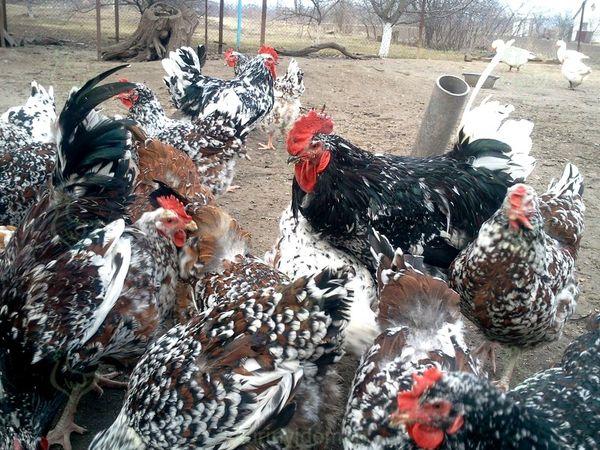
Preparation of individuals for exhibition events involves the creation of favorable environmental conditions and a correct diet.
The selected individuals must be constantly examined in order to timely detect and eliminate developmental deviations.
What feeds chickens and adult chickens?
A large amount of calcium is recommended in the breed's diet to prevent cannibalism among birds. For this purpose, a box with crushed chalk or shell rock is placed inside the chicken coop.
Active weight gain will be facilitated by the use of special mixed feed by chickens, which contains several grain crops.
Young chickens require animal proteins to develop properly. The growth and quality of plumage is positively affected by the addition of ash to wet mash. Also, Livensky chickens love vegetable preparations, branch feed and dried nettles.
Features of breeding birds
In order to successfully breed Livensky chickens, you need to observe a number of care and cultivation features. The main requirements are the presence of a spacious area in the chicken coop and mandatory walking in the open air.
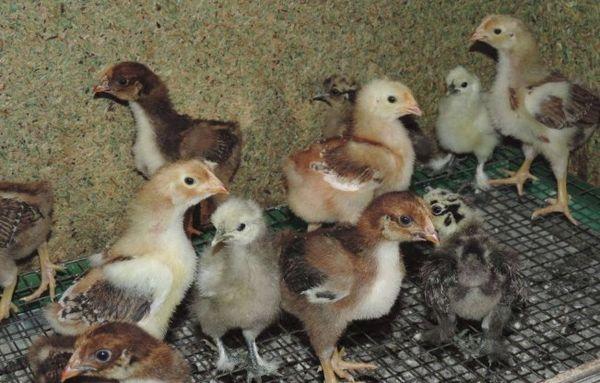
It is recommended to install sand and ash baths inside the house, which will help keep the birds beautiful. Bird nests are located in secluded corners for easy access. The condition of the chickens should be constantly examined to monitor the process of their development.
Diseases and their treatment
The most common disease of the Lieven calico chickens is mycoplasmosis. Infected chickens show the following symptoms:
- slow growth;
- lack of appetite;
- wheezing in the trachea;
- dyspnea;
- decrease in productivity.
Antibiotic drugs are used to treat mycoplasmosis. Medicines are diluted in water and given to birds for drinking. The standard course of treatment does not exceed 5 days.
Among the parasites for Livensky chickens are worms. Because of them, diarrhea occurs, the color of the scallop fades, apathy is observed, and weight decreases. Disinfection of the premises and treatment of infected chickens helps to fight worms. Against worms, the drug "Piperazine" is used, which is sold in a veterinary pharmacy. The course of treatment is 3 days.
